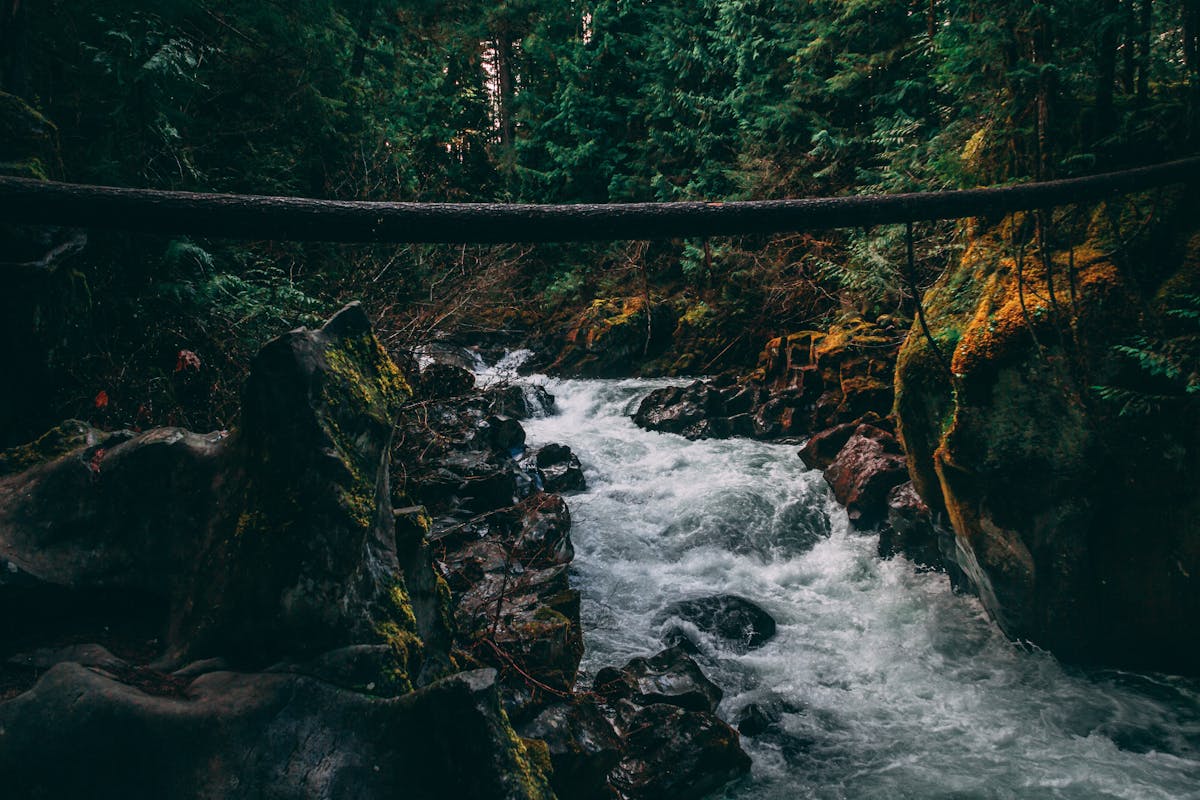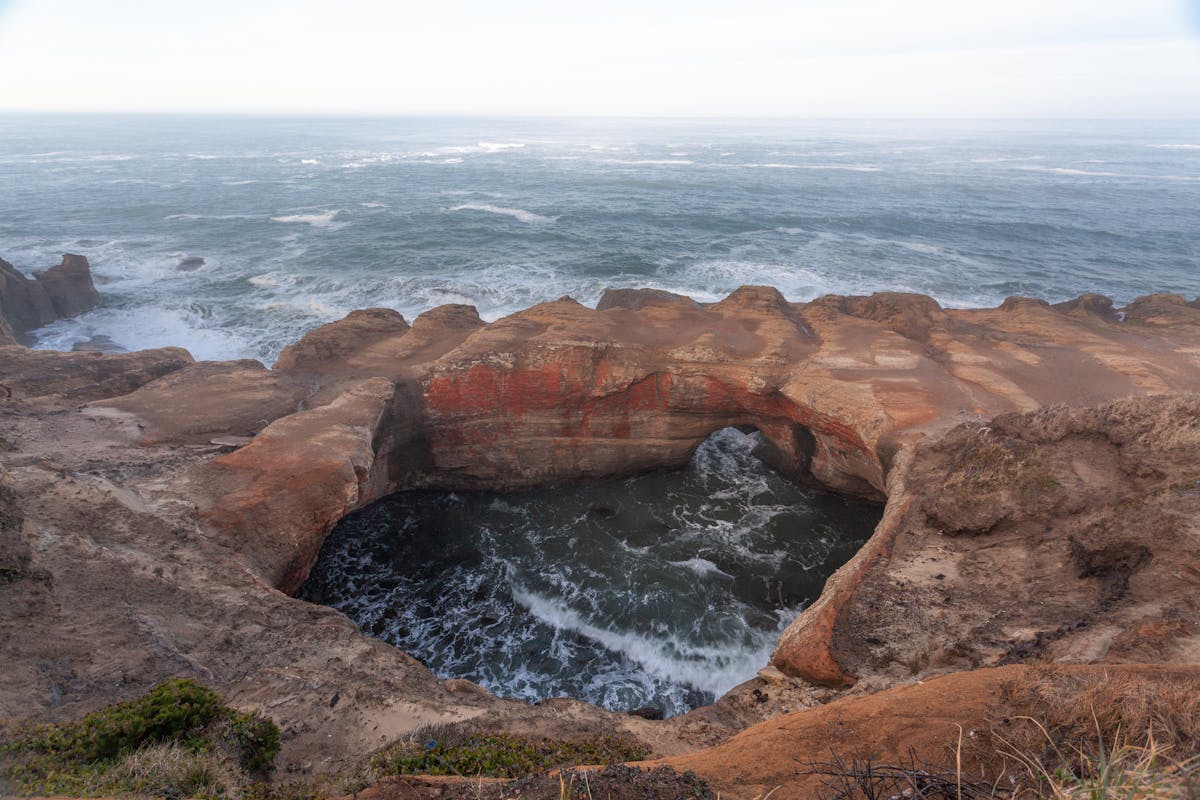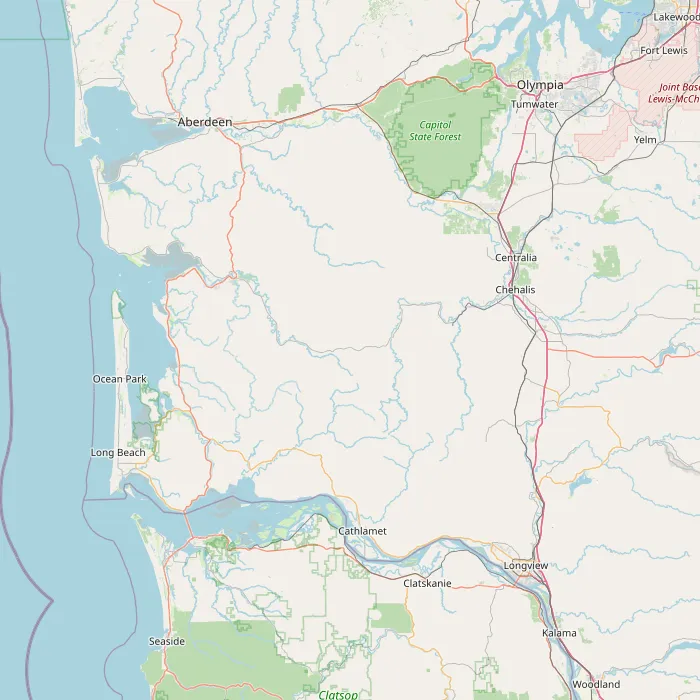Nestled where the mighty Columbia River meets the vast Pacific Ocean, Astoria, Oregon, offers a captivating blend of history, culture, and breathtaking scenery. To truly appreciate this coastal gem, understanding the local weather patterns is key. Planning your trip around the Astoria Oregon Climate ensures you’re prepared for its famous misty days, dramatic storms, or surprisingly sunny spells. Let’s explore what you can expect from the climate in Astoria throughout the year and how it shapes the unique experiences available to visitors.
The climate in Astoria is distinctly maritime, heavily influenced by its proximity to the Pacific Ocean. This results in relatively mild temperatures year-round, avoiding the extremes often seen in inland areas. However, this moderation comes with a significant amount of precipitation, making Astoria one of the wetter cities in the Pacific Northwest. Understanding these fundamental characteristics of the Astoria Oregon Climate is the first step in planning a successful visit, no matter the season.
Understanding the Unique Astoria Oregon Climate
Astoria is situated at the northwestern tip of Oregon, placing it directly in the path of weather systems rolling in from the Pacific. This geographical location dictates a climate characterized by mild, wet winters and cool, relatively dry summers, though “dry” is a relative term on the Oregon Coast. The average temperature fluctuates less dramatically than in many other parts of the United States, with average highs in the 60s°F (15-20°C) in summer and in the high 40s°F (around 8°C) in winter.
The coastal influence means that extreme heat or cold are rare occurrences. Frosts in winter are infrequent near the immediate coast, and scorching summer days are even less common. Instead, visitors can expect a consistent marine layer influence, which often brings fog, especially during the summer months. This fog is a quintessential part of the Astoria Oregon Climate experience, adding a layer of mystery and atmosphere to the landscape.
Key Characteristics of the Astoria Climate
Rainfall is the defining feature of the Astoria Oregon Climate, particularly from late autumn through spring. The city receives a substantial amount of precipitation annually, with December and January typically being the wettest months. While heavy downpours are possible, the rain often manifests as persistent drizzle or light showers, sometimes lasting for days.
Despite the rain, sunny days do occur, even in winter. When they do, they are often crisp and clear, offering stunning views of the river, bay, and ocean. Wind is another factor, especially near the coast and on higher ground like Coxcomb Hill. Understanding these nuances of temperature, precipitation, and wind is crucial for packing and planning activities around the Astoria Oregon Climate.
Seasonal Variations: Navigating the Astoria Oregon Climate Year-Round
Each season in Astoria offers a different facet of its character, largely dictated by the prevailing weather patterns. From the vibrant greens of spring to the dramatic skies of winter, the Astoria Oregon Climate provides a dynamic backdrop for exploration.
Spring: Blossoms and Showers
Spring sees a gradual transition from the wettest part of the year to milder conditions. Temperatures begin to rise, and while rain is still frequent, there are more breaks and longer periods of sunshine. This is a beautiful time as the landscape comes alive with new growth and blooming flowers.
Travelers visiting in spring should still expect and pack for rain, but they’ll also get glimpses of warmer days perfect for exploring downtown or taking coastal drives. The spring months offer fewer crowds than summer, making it an ideal time for those who prefer a quieter experience while still enjoying the beauty of the Oregon Coast as it wakes up from winter.
Summer: The Mild & Misty Peak
Summer is the warmest and driest season, though “dry” is relative. Average high temperatures are pleasant, typically in the mid-60s°F. However, coastal fog is very common, especially in the mornings, often burning off by the afternoon but sometimes lingering all day. This keeps temperatures cool compared to inland Oregon.

Summer is peak tourist season in Astoria due to the most favorable weather and school holidays. It’s the best time for activities centered around the water, though layers are essential as evenings can be cool, and the fog can roll in unexpectedly. The sunshine hours are longest, providing ample time for exploration.
Autumn: Fall Colors Meet Coastal Rain
Autumn brings stunning fall colors to the surrounding forests before the landscape turns to winter greens. Temperatures remain mild in early autumn, but the amount and frequency of rain increase significantly as the season progresses. This transition period offers dramatic skies and fewer crowds than summer.

October and November see the return of heavier rainfall, marking the shift back to the traditional Pacific Northwest wet season. This time of year is perfect for cozy indoor activities, exploring museums, or enjoying the local food scene. The dramatic weather can also be a draw for some visitors interested in storm watching.
Winter: The Stormy, Cozy Season
Winter is the wettest and coolest season in Astoria. While temperatures are mild compared to many other regions (rarely dropping below freezing), rainfall is substantial. This is the time for dramatic coastal storms, high winds, and powerful waves hitting the shore.
Despite the rain, winter in Astoria has a unique charm. It’s the least crowded time of year, offering a peaceful, introspective atmosphere. Cozy cafes, warm breweries, and the chance for breathtaking, albeit wet, walks on deserted beaches are highlights. The Astoria Oregon Climate in winter is perfect for those who appreciate moody weather and a relaxed pace.
Experiencing Astoria: How Climate Shapes Activities
The Astoria Oregon Climate plays a significant role in determining the types of activities and experiences you’ll have during your visit. Being prepared for the weather is the first step to enjoying everything this area has to offer, from outdoor adventures to indoor cultural explorations.
Outdoor Exploration: Trails, Beaches, and Waterways
Astoria and the surrounding area offer fantastic opportunities for hiking, exploring beaches, kayaking, and fishing. The best time for these activities often aligns with the drier, milder summer months, but prepared adventurers can enjoy them year-round. Waterproof gear is non-negotiable for spring, fall, and winter.
Hiking trails through lush coastal forests remain accessible year-round, though they can be muddy. Beachcombing is popular in all seasons, with winter storms often washing up interesting treasures. Kayaking and paddleboarding are most comfortable in the calmer, warmer waters of summer, while fishing charters operate throughout the year, subject to weather conditions.
Embracing the Indoors: Culture, Cuisine, and Comfort
Given the frequent rain, Astoria excels at providing wonderful indoor experiences. The city boasts several excellent museums, including the Columbia River Maritime Museum, which is a must-visit. Art galleries, independent bookstores, and unique shops offer hours of browsing.
Discover the Best of What to Do in Downtown Denver – Your Ultimate Guide
Discover the Best Brunch in Denver – A Local’s Guide
Top 10 Places to Visit in Nevada with Family for an Epic Trip
Astoria’s burgeoning food and drink scene is also perfect for rainy days. Cozy cafes, craft breweries, distilleries, and restaurants serving fresh local seafood provide warmth and delicious sustenance. The climate fosters a culture of gathering indoors, creating a welcoming and intimate atmosphere.
Essential Packing Tips for Any Season
Regardless of when you visit, packing layers is the golden rule for the Astoria Oregon Climate. Even on a sunny summer day, the temperature can drop quickly if the fog rolls in or after sunset. Waterproof and windproof outer layers are crucial for staying comfortable, especially during the wetter seasons.
Sturdy, waterproof footwear is also highly recommended, whether you plan to hike, explore the waterfront, or just stroll around town. Don’t forget an umbrella, though a good hooded rain jacket is often more practical in the wind. Embrace the concept of “there’s no bad weather, only bad gear,” and you’ll be set to enjoy Astoria.
Climate, Culture, and History: An Intertwined Narrative
The unique Astoria Oregon Climate has undeniably shaped the history and culture of the region. Its location at the mouth of a major river meeting the Pacific meant a life intricately tied to the water and the weather it brought. Maritime industries, from fishing to logging transported by river, were dominant for centuries, and success (and survival) depended on reading the skies and the seas.
The architecture of Astoria, with its charming Victorian homes clinging to steep hillsides, often features design elements built to withstand rain and wind. The resilience and self-reliance often associated with Pacific Northwest culture are partly a product of living with a challenging but beautiful climate. The moody, often-grey skies contribute to the area’s distinctive aesthetic, influencing local art, photography, and general atmosphere.
Choosing Your Travel Time Based on the Astoria Oregon Climate
When is the best time to visit Astoria? It depends on what you’re looking for.
- For the mildest, driest weather and most outdoor activities: Summer (July to September). Be prepared for fog and the largest crowds.
- For fewer crowds, potential sunshine breaks, and burgeoning nature: Spring (April to June). Pack for significant rain.
- For fall colors, dramatic skies, and cozy indoor experiences: Early Autumn (September to October). Rain increases later in the season.
- For storm watching, a quiet escape, and ultimate coziness: Winter (November to March). Expect the most rain and wind.
Each season under the Astoria Oregon Climate offers a distinct and rewarding experience. There’s truly no wrong time to visit, only different ways to embrace the local conditions.
Frequently Asked Questions About Astoria Oregon Climate
Understanding a place’s weather helps set expectations and plan effectively. Here are some common questions about the climate in Astoria, Oregon:
Is it always raining in Astoria, Oregon?
While Astoria is known for its rain, it doesn’t rain constantly. The wet season runs roughly from November to March, with frequent drizzle and showers. However, breaks in the rain and even sunny days occur. Summers are considerably drier, though coastal fog is common.
What is the warmest month in Astoria?
August is typically the warmest month in Astoria, with average high temperatures in the mid-60s°F (around 18-19°C). Temperatures rarely exceed the low 70s°F.
Is Astoria, Oregon windy?
Yes, Astoria can be quite windy, especially along the waterfront and on elevated areas like Coxcomb Hill. The wind is more pronounced during the stormy winter months but can be a factor in any season due to the coastal location.
Does Astoria get snow?
Snow is rare in Astoria, particularly at sea level. When it does snow, it typically doesn’t accumulate significantly or last long due to the mild temperatures.
What should I pack for a trip to Astoria?
Layers are essential. Include waterproof and windproof jackets and pants, sturdy waterproof shoes, sweaters or fleece layers, and quick-drying clothing. An umbrella can be useful but isn’t always practical in high winds.
 Map showing data sources contributing to understanding Astoria Oregon Climate
Map showing data sources contributing to understanding Astoria Oregon Climate
Embracing the Astoria Climate
The Astoria Oregon Climate is an integral part of the town’s identity and charm. It shapes the landscape, influences the local lifestyle, and provides a dynamic backdrop for your adventures. Whether you come prepared for misty mornings, sunny afternoons, or dramatic coastal storms, understanding the climate ensures you can fully immerse yourself in the rich history, vibrant culture, and stunning natural beauty of this captivating Oregon Coast destination. Come ready to experience Astoria, rain or shine – you won’t be disappointed.
